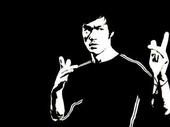I was born at the Jackson Street Hospital in San Francisco’s Chinatown in the United States, to a Chinese theatrical family touring the country. My parents and I returned to Hong Kong when I was only three months old. My father, Lee Hoi-Chuen was Chinese, and my Catholic mother, Grace, was half German and half Chinese . I am a citizen of the United States and do not hold any other citizenships.
At age 12, I entered into La Salle Academy, a secondary school. Then, I attended St Francis Xavier's College. In 1959, at the age of 18, I got into a fight with a feared Triad gang member's son. My father became concerned about my safety, and as a result, he and my mother decided to send me to the United States to live with an old friend of my father's.
After high school, I enrolled at the University of Washington as a drama major and took philosophy classes. It was at the University of Washington that I met my future wife Linda Emery, whom I would marry in 1964, and have 2 wonderful children with.
My father, Lee Hoi-Chuen was a famous Cantonese Opera star. Through my father, I was introduced into films at a very young age and appeared in several short black-and-white films as a child. I had my first role when I was a mere baby that was carried onto the stage! By the time I was 18, I had appeared in 20 films. Having acted in non-martial arts films throughout my childhood and teenage years in Hong Kong, I attempted to start his acting career in the United States in the 1960s. I became famous for playing Kato alongside Van Williams in the TV series The Green Hornet, which lasted for only one season from 1966 to 1967. I also played Kato in two episodes of the series Batman which was also produced by the same people of The Green Hornet. This was followed by guest appearances in television series such as Ironside (1967) and Here Come the Brides (1969). In 1969 I made my first major film appearance in Marlowe where I played a henchman hired to intimidate private detective Philip Marlowe by smashing up his office with karate chops and kicks.
In 1971 I appeared in four episodes of the television series Longstreet as the martial arts instructor of the title character Mike Longsteet.
Not happy with the roles that I was being offered in the U.S., I then returned to Hong Kong and was offered a film contract by Raymond Chow to appear in films produced by his company Golden Harvest. I played my first leading role in The Big Boss (1971) which was a huge box office success all over Asia that catapulted me to stardom. I went on to star in Fist of Fury (1972) which was an even bigger success at the box office and wrote, directed and starred in Way of the Dragon (1972). In 1964 at a demonstration in Long Beach, California, I met karate champion Chuck Norris. In Way of the Dragon I introduced Chuck Norris as my opponent in the final fight scene at the colosseum in Rome which is considered to be one of my most famous fight scenes. I was then offered the lead role in Enter the Dragon (1973) which was the first to be produced jointly by a Chinese and American studio. This was to be the film that would have shot me to fame in America. Tragically, I mysteriously died three weeks before the film was released.Enter the Dragon went on to become one of the highest grossing films of the year and cemented my status as a martial arts legend. It was made for US$850,000 in 1973 ($3.74 million in 2005 currency). To date, Enter the Dragon has grossed over $200 million worldwide.[12] The movie sparked a brief fad in the martial-arts epitomized in songs like Kung Fu Fighting and TV shows like Kung Fu.
My first introduction into martial arts was through my father, when he taught me Wu style Tai Chi. After learning from my father, I began teaching martial arts after my arrival in the United States in 1959. I taught what I call the "Tao of Chinese Gung Fu" with Wing Chun at its core,
known as Jun Fan Gung Fu (Bruce's Gung Fu)
After being physically and mentally exhausted after a fight with Wong Hui, I then developed Jeet Kune Do.
Jeet Kune Do originated in 1965. The match with Wong influenced my philosophy on fighting. I believe that the fight had lasted too long and that I had failed to live up to my potential. I took the view that traditional martial arts techniques were too rigid and formalistic to be practical in scenarios of chaotic street fighting. I decided to develop a system with an emphasis on "practicality, flexibility, speed, and efficiency". I started to use different methods of training such as weight training for strength, running for endurance, stretching for flexibility, and many others which I constantly adapted.
Though dieing at the young age of 32, the legend of Bruce Lee lives on.
Try the BEST MySpace Editor and MySpace Backgrounds at MySpace Toolbox !
